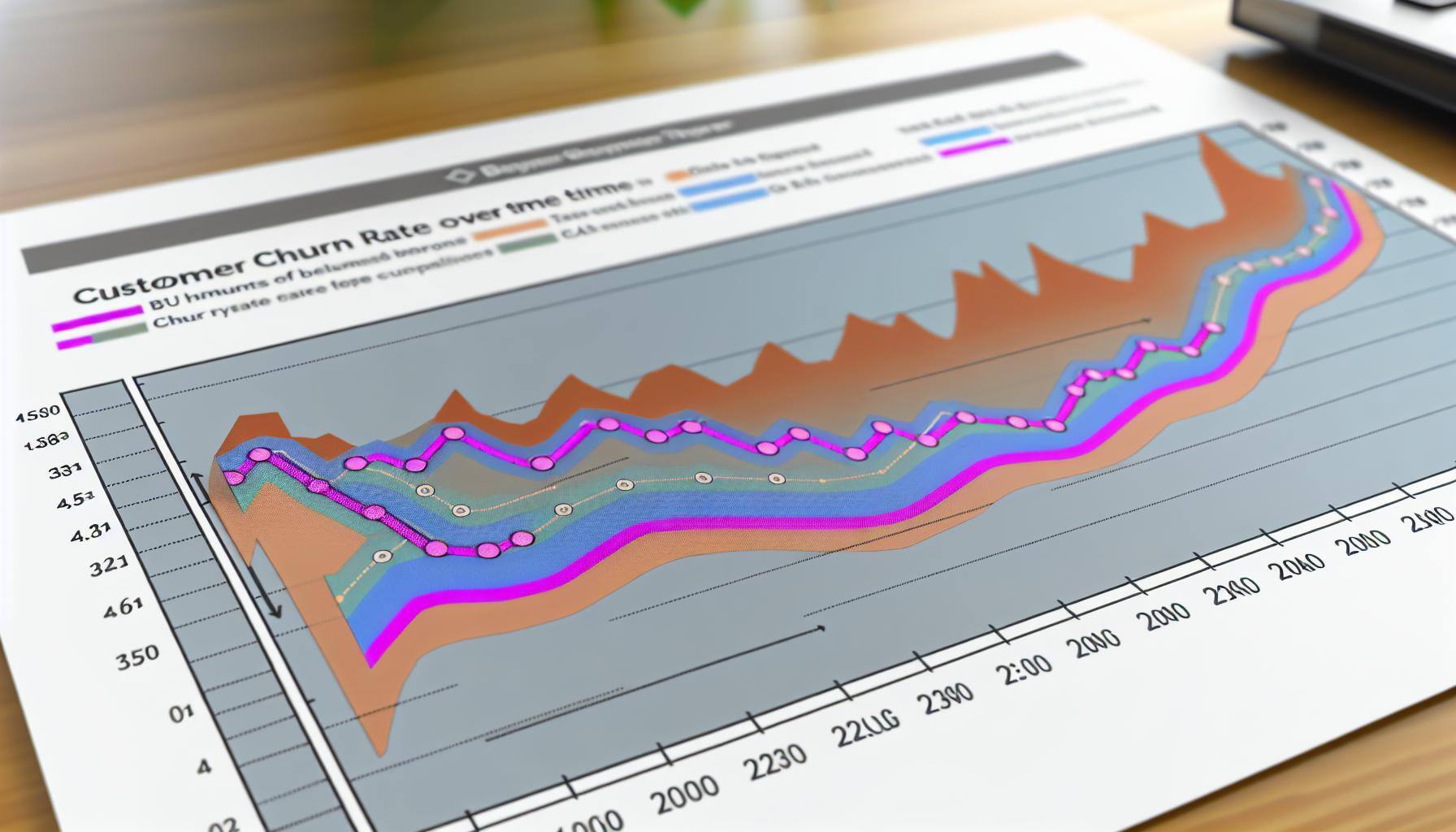Proven Strategies to Reduce Customer Churn in B2B SaaS
In the fast-paced world of B2B SaaS, keeping your customers is the difference between thriving and merely surviving. High churn rates can drain your...
2 min read
Brian Polackoff
:
Aug 16, 2024 9:17:00 AM
In the competitive realm of B2B SaaS, customer retention is as crucial as acquiring new clients. Churn, the phenomenon where customers cease their subscriptions and stop doing business with a company, is one of the most critical metrics that can make or break a SaaS business. This comprehensive blog post explores the importance of preventing churn, the strategies SaaS companies can employ to mitigate it, and the long-term benefits of a loyal customer base.
Churn rate, often expressed as a percentage, measures the rate at which customers discontinue their service subscriptions within a given period. For B2B SaaS companies, where business models are predicated on recurring revenue streams, high churn rates can have severe implications:
The importance of churn prevention cannot be overstated. Here are several reasons why SaaS companies must prioritize reducing churn:
Sustained Revenue Growth: Customer retention stabilizes and increases revenue, as existing customers are more likely to purchase additional services and less likely to switch to competitors.
Enhanced Customer Lifetime Value (CLV): Reducing churn improves the lifetime value of customers, which is a critical metric for assessing the profitability of investment in customer acquisition and retention.
Better Profit Margins: Retained customers often cost less in terms of service and support than new customers, and they are more likely to buy additional products or upgrade their plans, contributing to better profit margins.
Improved Product and Service Quality: Feedback from long-term customers can provide invaluable insights into product improvements and innovation, driving better customer satisfaction and further reducing churn.
Competitive Advantage: Companies with low churn rates often enjoy a competitive advantage in their markets. A reputation for high customer retention is attractive to prospective clients and can act as a significant differentiator.
Preventing churn requires a multifaceted approach, tailored to the unique needs of each customer segment within a SaaS company. Below are some effective strategies:
Onboarding Excellence: The initial phase of customer interaction, onboarding, is crucial. A clear, comprehensive onboarding process that helps customers understand and utilize the product effectively can significantly reduce early churn.
Regular Customer Engagement: Maintaining regular contact with customers through newsletters, updates, and personal check-ins can keep the customer relationship strong and provide early warnings of dissatisfaction.
Customer Feedback Loop: Implementing a robust mechanism for collecting, analyzing, and acting on customer feedback ensures that the product continuously evolves in line with customer needs, thereby reducing the likelihood of churn.
Predictive Analytics: Utilizing data analytics to predict which customers are at risk of churning allows companies to proactively address these risks with targeted interventions.
Personalized Experiences: Customizing the user experience and offering personalized support based on the customer’s usage patterns and preferences can significantly enhance customer satisfaction and loyalty.
Flexible Pricing Plans: Offering different pricing tiers and flexibility in service plans can help accommodate the varying needs and financial conditions of customers, reducing the need for them to look elsewhere.
Quality Customer Support: Providing timely, effective, and empathetic customer support is crucial for resolving issues and maintaining customer trust and satisfaction.
In the long run, effective churn prevention strategies contribute to building a sustainable business with a strong, loyal customer base. This loyalty not only fuels revenue growth through upsells and cross-sells but also enhances the overall market reputation of the company, making it more attractive to new customers and potential investors. Moreover, a loyal customer base can provide valuable referrals, reducing the cost and effort required for new customer acquisition.
In conclusion, preventing churn is not just about retaining customers but about fostering a positive customer experience that enhances satisfaction, loyalty, and advocacy. For B2B SaaS companies aiming for long-term success, investing in sophisticated churn prevention strategies is essential. The payoff is a more robust, stable, and profitable business that stands the test of time and turbulence in the competitive SaaS marketplace.

In the fast-paced world of B2B SaaS, keeping your customers is the difference between thriving and merely surviving. High churn rates can drain your...

Customer churn represents a critical challenge for B2B SaaS companies. Churn occurs when customers stop using a product or service, leading to lost...

The real challenge lies in mastering customer retention for sustainable growth. This article delves into the critical area of B2B SaaS customer...